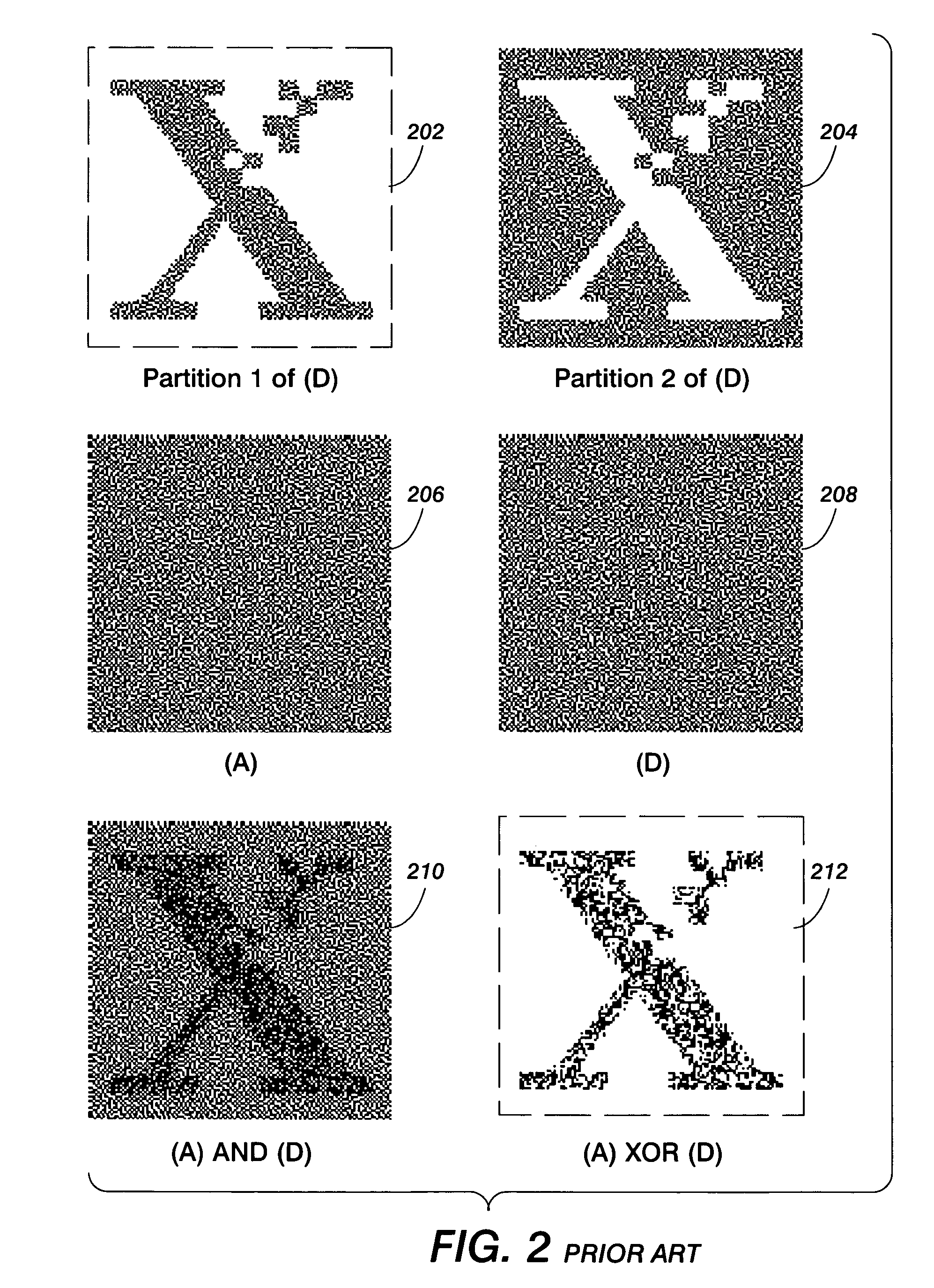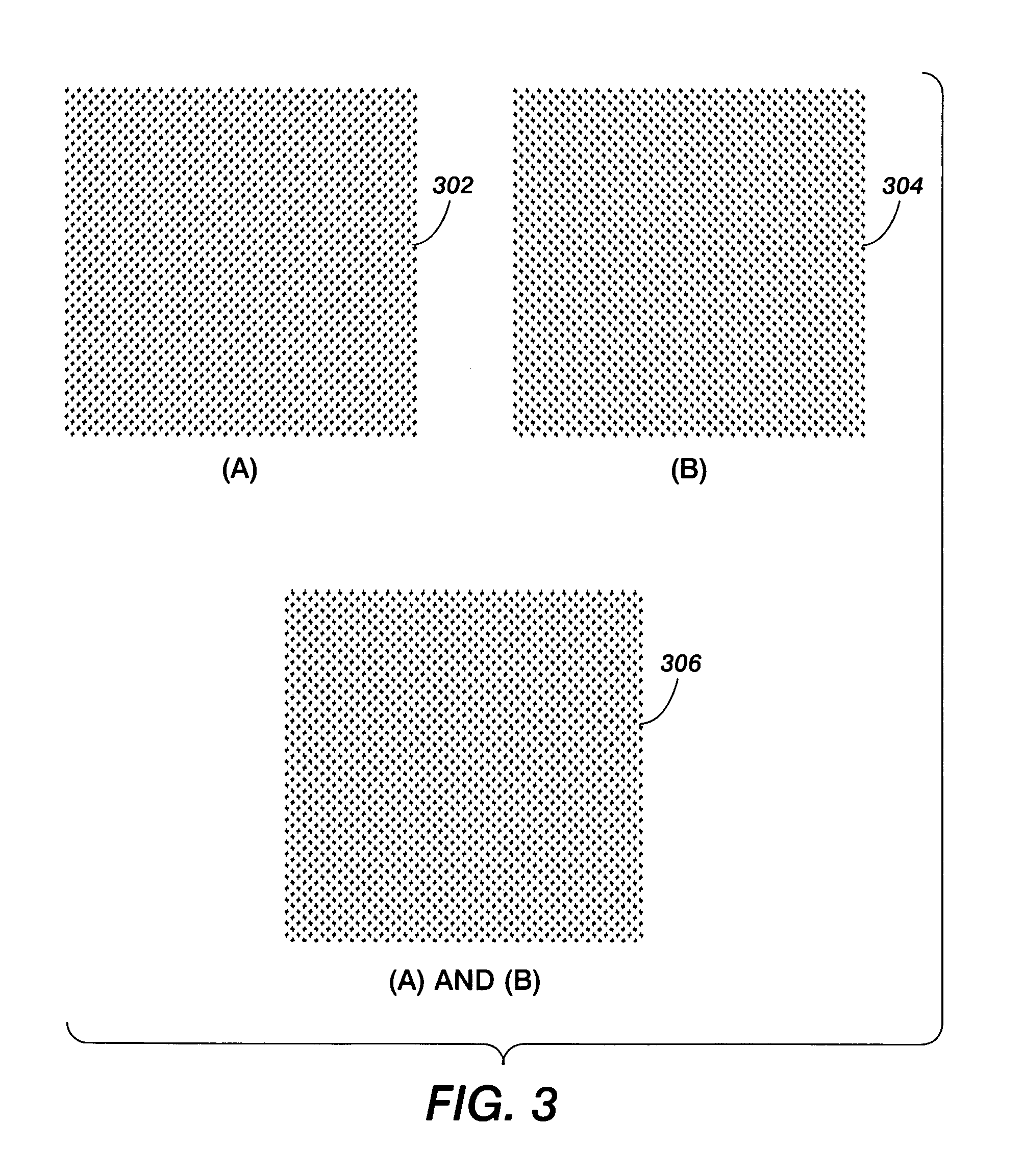Conjugate cluster screens for embedding digital watermarks into printed halftone documents
a technology of cluster screens and watermarks, applied in the field of data processing methods and systems, can solve the problems of difficult for the creator of images to generate electronic originals, difficult for him to reproduce documents without showing their unauthenticity, and difficult to remove without damaging the image, so as to reduce any possible visual notice, no loss of image quality, effect of reducing the effect of visual noti
- Summary
- Abstract
- Description
- Claims
- Application Information
AI Technical Summary
Benefits of technology
Problems solved by technology
Method used
Image
Examples
Embodiment Construction
[0031]The particular values and configurations discussed in these non-limiting examples can be varied and are cited merely to illustrate embodiments and are not intended to limit the scope of the invention.
[0032]The embodiments disclosed herein provide a new approach for embedding invisible watermarks into documents utilizing conjugate cluster halftone screens. The main achievement of such an approach is that it maintains all important image quality requirements for high-end color printing, while adding the function of embedding invisible watermarks into printed halftone images. As described in greater detail herein, halftone image with embedded with watermarks according to the disclosed embodiments can provide the perceptually same image quality as the watermarks embedded by a normal halftone process utilizing four rotated cluster halftone screens with matched frequencies to satisfy a moiré-free condition.
[0033]FIG. 3 illustrates a group of halftone patterns 302, 304, and 306, in a...
PUM
 Login to View More
Login to View More Abstract
Description
Claims
Application Information
 Login to View More
Login to View More - R&D
- Intellectual Property
- Life Sciences
- Materials
- Tech Scout
- Unparalleled Data Quality
- Higher Quality Content
- 60% Fewer Hallucinations
Browse by: Latest US Patents, China's latest patents, Technical Efficacy Thesaurus, Application Domain, Technology Topic, Popular Technical Reports.
© 2025 PatSnap. All rights reserved.Legal|Privacy policy|Modern Slavery Act Transparency Statement|Sitemap|About US| Contact US: help@patsnap.com



